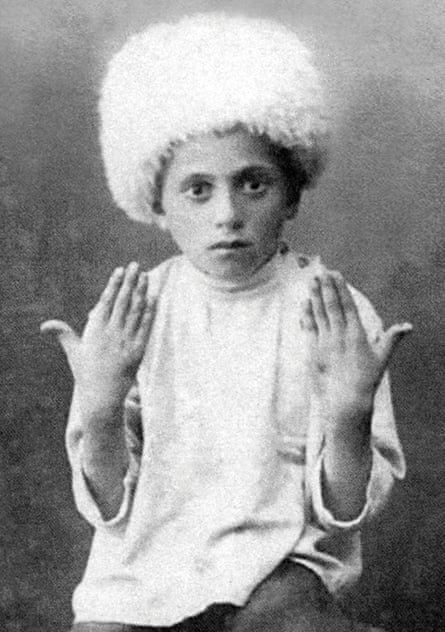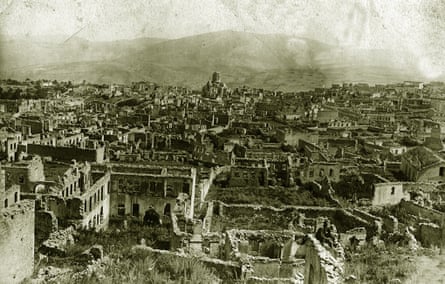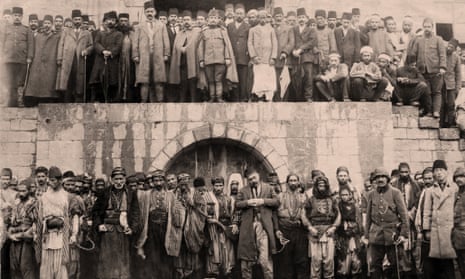What’s the story?
On 24 April, Armenians in Yerevan and around the world will mark the centenary of the genocide of 1915. That is the date when Ottoman authorities began arresting the leaders of the 2 million-strong minority Christian community. It is widely accepted that 1 million to 1.5 million Armenians died in the ensuing years until 1922, though there are no indisputable figures.
The Turkish government has never accepted the term genocide. It recognises killings that occurred in wartime but denies Armenians were systematically targeted and emphasises their links with enemy Russia as well as Armenian attacks on Muslims. Modern historical research has demolished the Turkish case, establishing intent, organisation and responsibility.
Turkey’s position has softened in recent times. In 2014 Recep Tayyip Erdoğan, now president, described the killings as “inhumane” and sent condolences to the descendants of the victims. But tempers flared when Turkey announced it would mark the centenary of the Allied landings at Gallipoli on 24 April. Critics say the intention was to deflect attention from and limit attendance by foreign VIPs at the memorial ceremony in Yerevan.
Armenians and others argue that impunity for the Turks, despite international outrage at the time, was one of the factors that allowed Hitler to exterminate the Jews of Europe a quarter of a century later.
How did this happen?
Armenians, an ancient people who converted to Christianity in the 3rd century AD, were persecuted in Ottoman Turkey in the late 19th and early 20th centuries. There was anger about the way Europe and Russia had intervened on the Armenians’ behalf as the empire lost territory. Anti-Armenian violence occurred in the 1890s and in 1909.
The wartime mass deportations and killings were orchestrated by the Teşkilât-ı Mahsusa (meaning “special organisation”), which sent coded orders to local governors. Armenians (in eastern, Russian-controlled Armenia) did fight with the tsarist forces and some Armenian nationalists helped precipitate the brutal Ottoman response. But most victims were civilians.

Much of the killing was carried out by Kurdish tribesmen. Many Armenians died from starvation and thirst on death marches in the Syrian desert. Rape, torture and other atrocities were common. Children, especially girls, were abducted and forcibly converted to Islam. Property was expropriated and churches destroyed.
The US was neutral at the time and its diplomats, as well as American and other Christian missionaries, witnessed and documented the killings. Washington condemned “crimes against humanity” – the first time that now common expression was used.
The Armenian republic that emerged at the end of the first world war represented only a small part of historic Armenia. It was briefly independent before becoming part of the Soviet Union until 1991, when it regained its independence. Turkish (western) Armenia disappeared from the maps.
Awareness of the genocide grew because of the focus on the Nazi Holocaust in the US and Israel in the 1960s and 1970s. Access to Ottoman archives has allowed scholars, Turkish and other, to deepen understanding of what happened. Experts argue that, if there is hope for change, it will come from shifting attitudes inside Turkey, not from Armenian or international pressure on Ankara.
What are the issues?
Recognition and denial
Armenians demand Turkish recognition of the genocide, though the UN genocide convention of 1948 is not applicable retroactively. Of the 22 countries that have formally recognised it, the most important are Russia and France. The US employed the term under President Ronald Reagan but has retreated since in the face of anger from Turkey, a Nato ally. Barack Obama uses the term Meds Yeghern – Armenian for “great calamity” – akin to the Hebrew word shoah for holocaust. But he will not use the G-word.
Britain adopts a similar position, condemning the massacres but arguing that the Armenian case has not been legally tested. Still, along with statements by the pope and the UN, national legislation criminalising genocide denial, and recognition by nearly all US states and many parliaments – including the European parliament – a quarter of the world in effect recognises the genocide. Outright denial is rare except in Turkey and Azerbaijan.
Armenian-Turkish relationship
The genocide issue hangs heavily over bilateral relations. Armenians say recognition is about their security, not only history and justice.
Turkey closed the border with Armenia in 1993 because of unresolved conflict in Nagorno-Karabakh, a region of Azerbaijan with an ethnic Armenian majority, in which Ankara and Yerevan are on opposing sides.
Armenia has tried pragmatically to improve relations and achieve reconciliation without setting preconditions, even on genocide. A draft Swiss-brokered agreement in 2009 was never ratified because of Turkish demands for movement on Nagorno-Karabkh. Thus two difficult issues have become intertwined. The result is deadlock.
Change in Turkey
Attitudes to the Armenian question have changed in Turkey in recent years, with liberal intellectuals questioning official narratives and recognising the genocide. Many books have appeared on the subject, which is researched and taught in universities. Reconciliation ceremonies have been held in formerly Armenian areas with Kurds whose ancestors slaughtered their Christian neighbours. Some Armenian churches have been restored.

There is also growing recognition of the existence of many thousands of “Islamised” Armenians, descendants of the survivors. Prosecutions for “denigrating Turkishness” have diminished. Despite conciliatory messages such as Erdoğan’s last year, Ankara refuses to apologise or, crucially, to budge on the genocide question. Still, the Turkish thaw, argues expert Thomas De Waal “is the only good news in this bleak historical tale”.
Armenian diaspora
Up to 10 million Armenians live outside Armenia, concentrated in Russia, the US and France.
Many are direct descendants of genocide victims. Diaspora organisations tend to be more militant than the republic itself on this question and are suspicious of moves towards normalisation with Turkey. The two main organisations in the US have made recognition their raison d’etre. This helps them preserve a collective identity and resist assimilation.
A recent pan-Armenian declaration focusing on the genocide was criticised by Levon Ter-Petrossian, the country’s former president, reflecting the view that Armenia needs to focus on its current problems and not be obsessed by a painful past.
Where can I find out more?
Peter Balakian’s The Burning Tigris is a readable account emphasising US testimony. For forensic research by a Turkish historian, try Taner Akcam’s A Shameful Act. In An Inconvenient Genocide, the British lawyer Geoffrey Robertson makes the human rights case. The wider background of the first world war has been recently retold in The Fall of the Ottomans by Eugene Rogan. Other accounts include Thomas de Waal’s Great Catastrophe: Armenians and Turks in the Shadow of Genocide and Vicken Cheterian’s Open Wounds: Armenians, Turks, and a Century of Genocide. Professor Bernard Lewis’s statement on Distinguishing the Armenian Case from the Holocaust. The website of the Gomidas Institute focuses on historical documentation about the genocide and current campaigns.
